Related Research Articles
Feminist film theory is a theoretical film criticism derived from feminist politics and feminist theory influenced by second-wave feminism and brought about around the 1970s in the United States. With the advancements in film throughout the years feminist film theory has developed and changed to analyse the current ways of film and also go back to analyse films past. Feminists have many approaches to cinema analysis, regarding the film elements analyzed and their theoretical underpinnings.
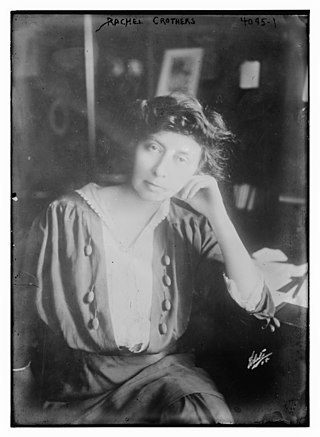
Rachel Crothers was an American playwright and theater director known for her well-crafted plays that often dealt with feminist themes. Among theater historians, she is generally recognized as "the most successful and prolific woman dramatist writing in the first part of the twentieth century." One of her most famous plays was Susan and God (1937), which was made into a film by MGM in 1940 starring Joan Crawford and Fredric March.

Mary Johnston was an American novelist and women's rights advocate from Virginia. She was one of America's best selling authors during her writing career and had three silent films adapted from her novels. Johnston was also an active member of the Equal Suffrage League of Virginia, using her writing skills and notability to draw attention to the cause of women's suffrage in Virginia.

Cléo from 5 to 7 is a 1962 French New Wave drama film written and directed by Agnès Varda.

Cleo is an Australian monthly women's magazine. The magazine was founded in 1972 in Australia; the Australia and New Zealand editions were discontinued in February 2016. Aimed at an older audience than the teenage-focused Australian magazine Dolly, Cleo was published by Bauer Media Group in Sydney and was known for its Cleo Bachelor of the Year award. In June 2020, Cleo was acquired by the Sydney investment firm Mercury Capital.

Florence Vidor was an American silent film actress.

Cleo Ridgely-Horne was a star of silent and sound motion pictures. Her career began early in the silent film era, in 1911, and continued for forty years. She retired in the 1930s but later returned to make more movies. Her final film was Hollywood Story (1951), in which she had a bit part.
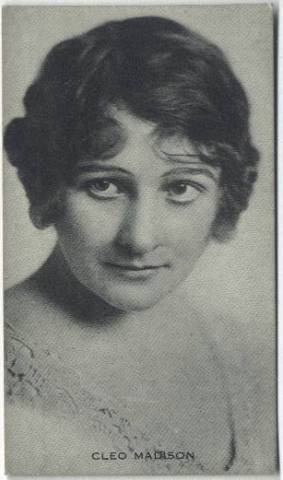
Cleo Madison was a theatrical and silent film actress, screenwriter, producer, and director who was active in Hollywood during the silent era.

Joan the Woman is a 1916 American epic silent drama film directed by Cecil B. DeMille and starring Geraldine Farrar as Joan of Arc. The film premiered on Christmas Day in 1916. This was DeMille's first historical drama. The screenplay is based on Friedrich Schiller's 1801 play Die Jungfrau von Orleans. This film was considered to be the "first cinematic spectacle about Joan of Arc."
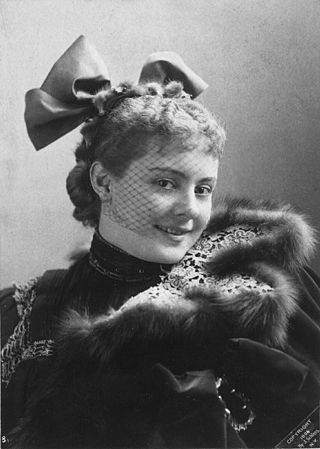
Cissy Fitzgerald was an English-American vaudeville actress, dancer, and singer who appeared in numerous silent and sound films. Fitzgerald acted in a popular Gaiety Girl show beginning in 1894 and was filmed in the role in 1896 in a self-titled short film shot by Thomas Edison's film company. She did not appear in films again until 1914 where she signed with the Vitagraph company and was quite popular in feature films and her own series of Cissy short films. Very little of Fitzgerald's silent material survives except her comic backup role in the 1928 Lon Chaney vehicle Laugh, Clown, Laugh.

Hindle Wakes is a 1927 British silent film drama, directed by Maurice Elvey and starring Estelle Brody and John Stuart. The film is adapted from Stanley Houghton's 1912 stage play of the same name, and reunites Brody and Stuart following their hugely popular pairing in the previous year's Mademoiselle from Armentieres. The film was also released under the title Fanny Hawthorne.

La falena is a 1916 silent Italian drama film directed by Carmine Gallone. The film is considered to be lost, with only a fragment surviving in the film archive of the Cineteca Italiana.

This Is Heaven is a 1929 American sound part-talkie pre-code sound part-talkie romantic comedy film directed by Alfred Santell and starring Vilma Bánky. In addition to sequences with audible dialogue or talking sequences, the film features a synchronized musical score and sound effects along with English intertitles. The soundtrack was recorded using the Western Electric sound-on-film system. The film was produced by Samuel Goldwyn and released through United Artists.

Frank D. Williams was a pioneering cinematographer who was active in the early days of the motion picture industry. He developed and patented the traveling matte shot.

Black Orchids is a 1917 American silent drama film written and directed by Rex Ingram. The film was released as The Fatal Orchids in the United Kingdom. The feature stars Cleo Madison, Francis McDonald and Dick La Reno. Ingram later remade the film as Trifling Women (1922).
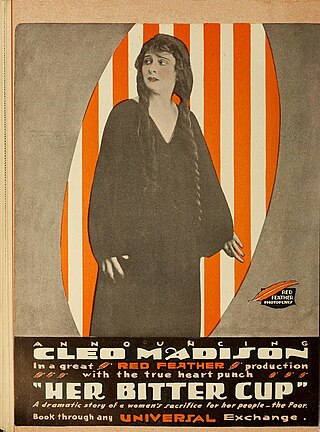
Her Bitter Cup is a 1916 American silent film directed by Cleo Madison. One of only two feature-length films directed by Madison, she also played the leading role, a fervent labor organizer who uses drastic methods to finance her cause of improving the miserable lot of the workers in a factory.

Jacyra Martins da Silveira, known by her stage name Cleo de Verberena, was a Brazilian actress and film director. She is widely considered as the first Brazilian woman to direct a film: 1931's O Mistério do Dominó Preto.

A Soul Enslaved is a 1916 American silent drama film directed by actress-turned-director Cleo Madison, and written by screenwriters Adele Farrington and Olga Printzlau. Madison also stars. The Universal film is believed to be lost.

Maria Priscilla Thurston Williams (1866–1932) was a newspaper editor, film producer, author, and scriptwriter. She is credited as the first African-American woman film producer for the silent crime drama The Flames of Wrath in 1923. A one-time school teacher, Williams had a history of activism, independence and interest in the liberal arts, which led her first to newspapers, then to film production, script-writing and acting and, finally, to memoir with her 1916 book My Work and Public Sentiment, in which she identified herself as a national organizer and speaker with the Good Citizens League, and stated that ten percent of the proceeds would go to suppressing crime among African Americans.
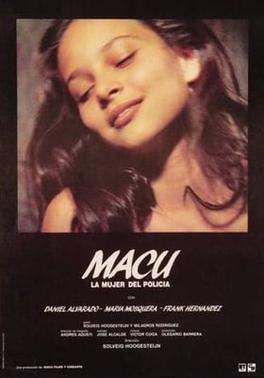
Macu, The Policeman's Woman is a 1987 Venezuelan film directed by the Swedish-Venezuelan filmmaker Solveig Hoogesteijn. It is also known as simply Macu and as Macu, the Policeman's Wife. It is a crime drama, and based on a real story; it is also identified as the popular Venezuelan genre known as 'common crime'. It tells the story of a woman who must testify against her criminal policeman husband for murdering her lover, starring Daniel Alvarado, María Luisa Mosquera and Frank Hernández.
References
- ↑ Slide, Anthony (1996-01-01). The Silent Feminists: America's First Women Directors. Scarecrow Press. ISBN 9780810830530.
- ↑ "Pioneers: First Women Filmmakers - Episode 8: Her Defiance". Netflix. Retrieved 6 May 2019.
- ↑ Foster, Gwendolyn Audrey (1995-01-01). Women Film Directors: An International Bio-critical Dictionary . Greenwood Publishing Group. p. 234. ISBN 9780313289729.
her defiance.
- ↑ The IMDB website
- ↑ Fry, Ron; Fourzon, Pamela (1977-01-01). The Saga of Special Effects. Prentice-Hall. ISBN 9780137859726.
- ↑ "Cleo Madison – Women Film Pioneers Project". wfpp.cdrs.columbia.edu. Retrieved 2015-11-19.